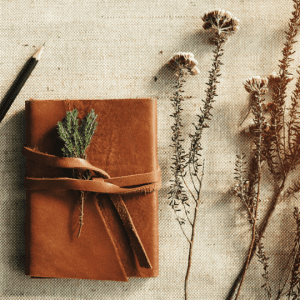 What is a garden journal and why should you create one? A journal is a place to document garden observations and record anything that relates to your garden, and by keeping a journal, you will be creating a form of reference manual for your garden.
What is a garden journal and why should you create one? A journal is a place to document garden observations and record anything that relates to your garden, and by keeping a journal, you will be creating a form of reference manual for your garden.
Recording observations and reviewing past journal entries, you will begin to see patterns in your garden such as; microclimates, optimum seed planting dates, or when yearly garden pests arrive. Also with all of your garden related information in one spot, it’s easier to find when you need it.
Journal formats fall into two broad categories: low/no-tech and technology based. The first category is a “traditional journal” and includes anything from a bound journal, to a three ring binder, or even a shoebox to hold plant tags, receipts and articles.
Some low/no-tech journal ideas to consider: calendar, spiral notebook, three ring binder, composition book, index cards, sketchbook, bound journal, diary, shoebox, accordion folder, photo album, scrapbooks.
The second category is digital and includes anything from a spreadsheet to an app on your phone or tablet. Technology based journal formats to consider: online journals, journal apps for smartphone, tablet, or laptop, digital photo journal online or on a laptop, garden records in a spreadsheet, garden blog, or even Pinterest or Instagram.
With so many options it may feel intimidating choosing a format. I suggest selecting a format for your journal by looking at your personal preferences in life. Love technology? Use an app on your phone, tablet, or laptop. Like to keep things in order but simple? A simple block calendar may work best for you. If chronological order doesn’t matter, maybe a binder or spiral notebook would work for you. Like to write? A diary or even a blog may be your preference. Do you like photography? How about a pictorial journal. Artistic ability? Use your talent to document your garden in drawings or paint. Prefer a scientific approach? If details are important to you and the ability to sort or quantify then try a spreadsheet. You may find that combining several formats works best for you, for example a binder for observations and digital photos of your garden on your laptop.
The next question to address is what to include in a journal. Some category suggestions are:
- Future Planning and Wish Lists
- Property and Garden Bed Diagrams
- Periodic Observations (daily, weekly, monthly, seasonally)
- Plants and Seeds
- Successes and Experiments (there are no garden failures only experiments!)
- Looking Back: An End of Year Review
- Reference, Test Results, Humor, and Inspiration
We provide these suggestions to get your imagination and thought process going. You may think of completely different items to include in your journal. Include what makes sense to you and accomplishes what your goal is in keeping a journal.
I hope you are convinced that it’s time to give journaling a try. A good time to start a journal is in the winter when our gardens are at rest. Start simple with a format that works for you. Let your journal evolve over time. Most importantly, have fun!
As Hanover Master Gardeners, we’ll continue to offer science-based gardening information from our Land-Grant Universities (Virginia Tech and Virginia State) when you need it. We can be reached at [email protected] and by phone at (804)-752-4310.
By Annette Schanz

